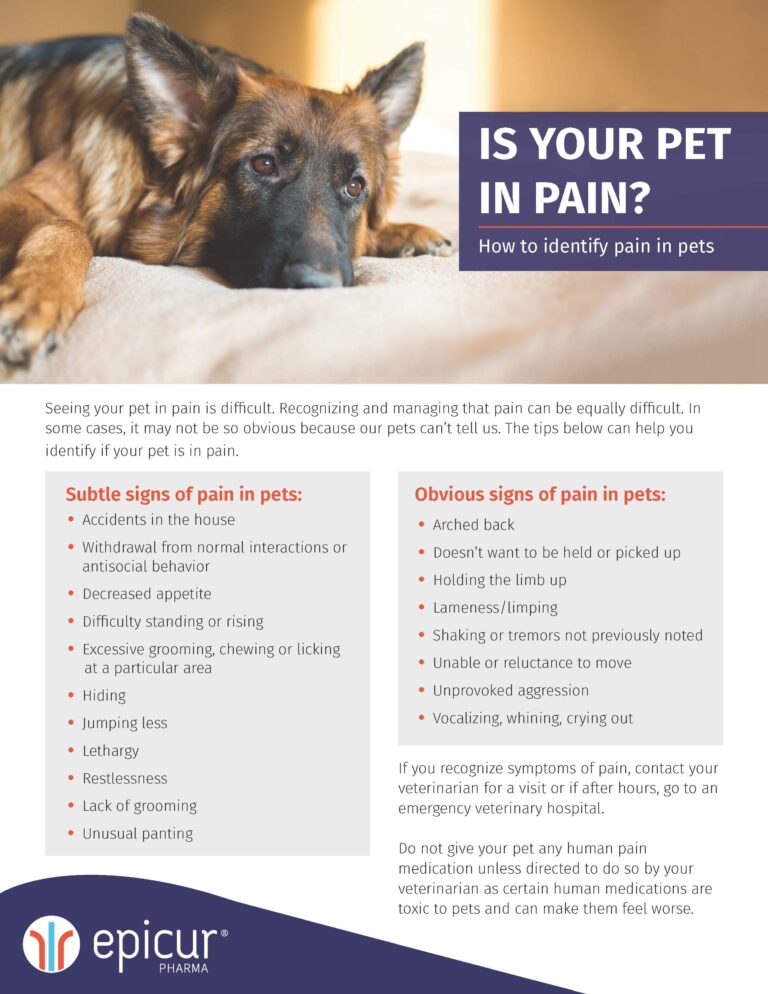September is Animal Pain Awareness Month. Take the opportunity to educate pet owners on recognizing when a pet is in pain and share tips for pain management.
As a veterinary professional you are trained to understand an animal’s communication styles and habits. You know how to recognize fear, excitement, stress, pain, and more. However, for even the most observant pet owners, these emotions can be hard to decipher and may even go unnoticed.
This is most commonly the case with pain. Because pets can’t verbally express their distress, their reactions to discomfort can often seem like simple changes in behavior. Your diagnosis, while bringing important information to light, may result in guilt, worry, and stress for the pet owner.
Open conversations about animal pain not only support the pet’s well-being but also allow you to develop a trusted relationship with pet owners through reassurance and education on pet behaviors.
Getting the Conversation Started
September is Animal Pain Awareness Month, making it a great opportunity to bring pain recognition and pain management top of mind for pet owners. From pain identifiers to suggestions for pain management at home, there is a variety of information that can help your clients support a better quality of life for their pets.
These four quick reminders can help ease pet owner stress about keeping their pets pain-free or helping manage pain:
Watch for behavior changes: This is the most common sign of pet discomfort; remind pet owners to take any changes into consideration.
Include pain checks in vet visits: Remind owners to check with you about possible indicators or discomfort during routine visits. You and your staff can support this by regularly asking pet owners about any noticed irregularities in an animal’s behavior.
Pain can cause pets to lash out: Due to discomfort, even the gentlest pets can become aggressive, making it important to use extra caution when caring for them.
Other Common Signs of Pet Pain:
- Restlessness
- Whining and crying
- Tucking tail
- Panting
- Constantly biting/chewing at a certain area
- Arched back
- Trembling
- Loss of appetite
4. Explore different pain solutions: Help pet owners understand the options they have for treating their pet’s pain. This could be medications, physical therapy, weight management, or other forms of relief.
Supporting Pet Owner Education with At-Home Pain Management Tips
To further put owners at ease about their pet’s pain, remind them there are ways they can comfort their pet at home. Based on your diagnosis and recommendations, there are simple ways to care for a hurting pet such as:
- Heat therapy
- Ice therapy for inflammation injuries
- Pain management medications (non-steroidal anti-inflammatory drugs or NSAIDs **as administered by your veterinarian**)
Epicur manufactures pain management meds for the highest quality patient care.
Gabapentin & Tramadol are common pain meds that you can send home with pets when you stock for in-house dispensing. If you’re prescribing steroids to help with inflammation, we can provide prednisone for dogs and prednisolone for cats. View our full product portfolio to see how we can help you stay stocked.
- Soft bed/couch with fluffy blankets
- Feed favorite foods (without sacrificing a balanced diet to promote healing)
- Provide comfort and company – give pets extra attention
Don’t shy away from talking about pet pain with your clients. It may be a difficult topic, but it’s the best way to build awareness and teach them practical pain management skills. Plus, by easing the stresses of pet ownership, you may just strengthen the bonds between you and your client!
Download our printable pain awareness tip sheet to send home with pet owners after visits, or keep it on-hand to refer to in your hospital:

Looking for more ways to start the convo about pet pain? The International Veterinary Academy of Pain Management (IVAPM), an animal pain awareness advocate, shares great resources to help your staff including tips specific to dog pain and cat pain.



